Kiss Me, Kill Me and Other True Cases Read online
Page 13
Ray, Dietz, and the men helping them secured the area and combed the roadside inch by inch. There was a chance that the killer—or killers—had dropped something, perhaps something very small, that could be traced.
Near the body itself, they found nothing. However, the deputies spotted some beer cans and pieces of female lingerie about a hundred yards away. The beer cans still had a trace of liquid in them, and appeared to have been deposited there recently. All the items were bagged separately and labeled as possible physical evidence.
When they felt that they could learn nothing more from the body site, Ray and Dietz released the body to the county coroner. An immediate autopsy was scheduled, to be performed by Dr. Albert Kroll. The pathologist concurred with the detectives’ supposition that the woman in the ditch had succumbed near midnight of the previous night. He removed the small silver earrings from the victim’s pierced ears and they were bagged and kept, in the hope that they might help in identifying her.
The dead woman had worn a ring on the third finger of her left hand; there was a light groove from pressure on the skin there, but the ring was gone. Either her killer didn’t want her to be identified through her jewelry or the missing ring was so valuable that it might even have been the motive for her murder.
Dr. Kroll guessed that she was in her early twenties. She had borne at least one child. She had not, however, engaged in sexual intercourse, either willingly or by force, within a day or so before her death, or been sexually assaulted after her death.
The only marks the pathologist found on the body were some scratches on her back, which he felt had occurred postmortem. “If the body had been dragged over a rough surface—say, concrete—these scratches would have occurred. And there was virtually no bleeding.”
Why, then, had she died? Toxicology screens would show there were no drugs in her system, or any alcohol. There were no bruises on the strap of muscles of her throat, and the hyoid bone at the back or her tongue—which is often broken during strangulation—was intact. Her eyes and face didn’t reveal any petechial hemorrhage—tiny pinpoints of dammed blood which bursts during strangulation or suffocation.
However, Dr. Kroll did find some petechiae in the brain and internal organs. “It was a matter of suffocation more than any other way,” he stated firmly. The woman’s airway had been effectively shut off, possibly by a pillow being pressed over her mouth and nose.
Shortly after the autopsy was completed, when embalming fluid was injected, hemorrhages did appear in the victim’s face. They tended to confirm Dr. Kroll’s suffocation diagnosis.
Both the police investigators and the pathologist agreed that it would have taken a very strong person to suffocate the victim. Normally, she would have fought hard to get a gulp of air. Yet, scrapings of her fingernails showed no evidence of flesh from her killer’s hands. Why? She had been neither drunk nor drugged. She hadn’t been struck or rendered unconscious that way. There were no hidden brain injuries beneath her skull when the top of the calvarium was sawed and lifted off. Why didn’t she fight?
Chief Criminal Deputy Scotty Ray, who’d grown up in Walla Walla and who had seen a succession of shocking homicide cases in his years on the department, was about to enter into a contest of wills with a man who would, in time, threaten not only Ray but his family.
Ray learned that a Walla Walla resident had reported his wife missing at 8:45 that Friday morning. Ray talked to the man, a 24-year-old postman named, fittingly, Carrier: Dale Carrier.*
The worried young husband said that his wife, Pamela, 16, had vanished from their home the night before. Tall, awkward, and bespectacled, Carrier explained that he and his wife had been out the evening before. At eleven P.M. they had picked up their two youngsters, age eight months and 2, from a sitter’s house. Then they had driven to the small house they’d rented recently on Isaacs Street, one of the main thoroughfares in Walla Walla.
“Pam put the kids to bed,” Carrier recalled. “But then she got to worrying about two kittens we had that were missing.”
Carrier said that his wife had gone to their door many times to call the lost kittens, and looked for them all around the yard, all to no avail. She had been worried that they would wander into the busy street and be hit by a car. Finally, he recalled, she had informed him that she was going to sleep in their car because she was afraid that she wouldn’t hear the kittens if they came home.
“What?” Ray asked incredulously.
“Yeah, she said that she couldn’t hear them on the back step if she slept in the bedroom, so she went out to the car.”
At that moment, Ray was suspicious. He had heard of animal lovers, but he found it hard to believe that a young mother would chance missing her children’s cries to hear those of kittens.
Of course, he didn’t know at this point that the dead girl was Pam Carrier. But the physical description given by Dale Carrier for his missing wife was hitting awfully close to that of the nude corpse found in the roadside weeds. Same height. Same weight.
The sheriff’s investigators contacted Pam Carrier’s relatives, as well as her dentist. When he furnished them with her dental records, there was no question that the nude girl found in the ditch was the 16-year-old Pam. At least her husband and relatives wouldn’t have to go through identifying her body.
After getting the verification that it was Pam Carrier who had been left beside the country road, Scotty Ray returned to his office, where the tall mailman waited. When Ray confirmed that the dead woman was Carrier’s wife, Carrier broke down and sobbed for several minutes.
When he was finally able to talk, he agreed to try to help in the investigation of his wife’s killing. Although he couldn’t imagine who might have wanted to kill her, he would tell them everything he could about her.
Dale Carrier said that he and Pam had been married for two years. She had been only 14 at the time of the wedding, but she was pregnant and it seemed the best choice they had to give their baby a chance and save Pam’s reputation. Their first son was born a few months later. And then Pam had conceived again while Dale Jr. was just a baby.
In answer to Ray’s questions about their marriage, the lanky widower admitted that things hadn’t been going too smoothly. Not surprisingly, his young wife had found herself too tied down for a girl in her mid-teens. She had confessed to him, he said, that she wanted to date boys her own age, and that she felt she had missed out on an important part of her life. That desire on her part had hurt him but he had tried to understand. There had been talk of a divorce, and the couple had gone so far as to visit a lawyer a few weeks before.
Carrier agreed to let detectives search his home and yard. He didn’t think they would find anything, however, as he himself had looked for any sign of Pam earlier and found nothing. He told Ray that he had started to look for his wife around one A.M. He was so concerned about her when he didn’t find her in the car or the yard that he drove to several locations looking for her. When he’d been unsuccessful in his search, he had gone home to bed and awakened at five to look for her again.
Detectives at the Carriers’ modest home on East Isaacs Street noted, first of all, no cats or even any signs that cats had lived there. There were no cat dishes, cat food, litter box, or even cat hairs on any of the furniture pieces upholstered in dark fabric.
“Kittens haven’t come back?” Ray asked.
Carrier shook his head. “Nope.”
Pam Carrier’s purse still rested on a table in her home. With Dale Carrier’s permission, they looked inside. They found her glasses, and they were thick, extremely strong glasses prescribed for someone who was very nearsighted. Later, an optometrist would estimate that the person needing those glasses would be unable to see clearly any object more than twenty feet away without the corrective lenses.
Ray and Dietz were curious about why she would have left after dark without her glasses to search for kittens. They could have been on the other side of the backyard and she wouldn’t have been able to see
them if she didn’t have her glasses on.
The fireplace in the postman’s home showed signs of being used very recently. During a week when temperatures reached almost a hundred degrees and cooled down to a mere eighty degrees at night, most people in town weren’t lighting logs in their fireplaces.
They sifted through the ashes and found remnants of purple cloth. Dale Carrier had an easy explanation for that: “Those were a cheap pair of purple pants of Pam’s. They were damaged in the dryer and one of us threw them in the fire last night.”
Carrier said that he and Pam had planned to sit by the fire the evening before, but that she had vetoed that plan when she decided to sleep in her car.
Ray said nothing at this point but, remembering the steaming evening of the day before, he doubted that a roaring fire in the fireplace was called for.
Pam Carrier’s relatives identified the bra and panties that investigators had found a hundred yards up the road from her body. Whoever had dumped her corpse in the ditch had apparently thrown them from a moving car almost as an afterthought.
A homicide detective works with a basic formula: Motive-Opportunity-Means. In the case of 16-year-old Pam Carrier, motive was a mystery. She hadn’t been raped; she didn’t have anything to steal—unless they could count a modest wedding band. Questioning of her family, friends, and neighbors failed to turn up any enemies.
As far as opportunity went, the last person to be seen with her was her own husband—a husband who told them that she had indicated that she wanted to leave. Still, the possibility existed that some man had seen the young woman sleeping in an unlocked car late at night and decided to take advantage of a vulnerable target.
But then, she hadn’t been raped. And if she had cried out for help—as surely she would have—it would seem that her husband would have heard her.
No matter how they approached the case, Scotty Ray and Alex Dietz kept coming back to Dale Carrier. His story of leaving their two babies alone while he went driving around looking for Pam just didn’t make sense.
The “means”—or weapon—had probably been a pillow—something readily available in any home. However, looking at the bone-thin nonmuscular Carrier, the two detectives wondered how he could have suffocated his husky young wife with no signs of struggle and no scratches. If it had been the other way around, maybe . . . .
A week after Pam’s death, Scotty Ray had a visitor. It was Dale Carrier. He handed the detective a crumpled note. It was signed “Pam” and it said she’d “gone for a walk.”
Carrier said he had found it on the back porch of his home a few days before. He hadn’t brought it in sooner because he didn’t know how long it had been there.
If it had been on the back porch, Ray was pretty sure that he and the other investigators would have seen it when they checked the Carriers’ house right after Pam Carrier’s body was found. Still, he accepted it without comment.
But a check into Dale Carrier’s background failed to reveal any criminal record whatsoever. The postman was an ex–Navy man with an honorable discharge. Before that, he’d spent his childhood and youth in many different areas of the United States, as his parents had moved from place to place. He was employed by a federal agency, the U.S. Postal Service, which didn’t hire convicted felons or those with suspicious backgrounds.
Scotty Ray noted a keen native intelligence in the young widower, although Carrier lacked much formal education. He also found that, after his first dramatic sobs, Carrier demonstrated a rather flat emotional response to the death of his wife, the mother of his children. Although Carrier seemed to be cooperating with Ray, there was a certain wariness on his part, as if he were somehow jousting with the detective in an intricate game.
All through August, Ray worked on the Carrier killing. In September, he had to diminish the intensity of the probe because another Walla Walla County woman had been murdered. Dolores Wilson, a beauty parlor operator, was found dead, and it took several weeks of investigation until a suspect in her death was arrested and charged.
On September 14, Scotty Ray received a letter purportedly signed by Dale D. Carrier. It was a strange letter, smacking of protesting too much. The message, marked to be opened “only in the event of my death,” began: “I want you to know that I did not kill my wife.” It went on to say how much Carrier had loved his wife and what a wonderful girl she had been.
If Dale Carrier thought the letter would persuade Scotty Ray to drop his investigation, he was sadly mistaken. Actually, Ray had questioned Carrier himself only infrequently; it was Carrier’s friends and acquaintances who were questioned. And, of course, the word got back to the mailman. That’s the way Ray wanted it.
Just how nervous Carrier was beginning to feel about Scotty Ray wouldn’t be revealed until much later. Dale Carrier was playing some mind games himself.
• • •
Scotty Ray and his partner, Ron Kespohl, worked carefully, tying up dozens of loose ends. They wanted Dale Carrier and, with each new phase of their investigation, they wanted him more—but they had to build an almost perfect case. They had virtually no physical evidence, the backbone of a detective’s ideal case, and they wanted to be sure that, once charged, Carrier would not slip free through an unforeseen legal loophole.
It was December 9 when Ray, Kespohl, and Alex Dietz secured an arrest warrant for Dale Carrier, charging him with murder in the first degree in the death of his 16-year-old wife. They weren’t convinced that he would go easily when he learned he was being arrested, so they waited for the right moment.
The next day, Scotty Ray spotted the cagey postman in a gas station where he was talking to a couple of buddies. The chief criminal deputy knew that Carrier was always looking over his shoulder for some sight of him, so Ray radioed Deputy Frank Nemec and Kespohl that he had located Carrier.
It was fortunate that he had backup when he walked up to Carrier. The man who appeared to be a mild-mannered widower was armed with a .38 pistol with a four-inch barrel in a shoulder holster at the time of his arrest. However, he didn’t reach for it.
If Walla Walla citizens were surprised at Carrier’s arrest, they were in for a lot more surprises at trial time. It was a trial that seemed a long time coming. First slated for the following June, it was delayed until the fall calendar, more than a year after Pam Carrier’s murder.
Although the Washington State Penitentiary is located in Walla Walla, Washington, most of the citizens there have come to see it as a familiar background to their daily lives. They rarely lock their cars or homes and know little about the truly dangerous convicts in the maximum security units there. Crimes committed in their town and county are relatively rare. But they would be shaken by the many shocking revelations to come in the murder trial of Dale Carrier.
On November 8, a jury was picked. On November 9, Walla Walla County deputy prosecutor Jerry Votendahl outlined the prosecution’s case. Votendahl first assured jurors that he would present witnesses to back his statements about Dale Carrier’s motives to want his wife dead. He suggested the defendant was bitter about her alleged unfaithfulness and her attraction to young men her own age. He was also, Votendahl submitted, worried because she had knowledge of some crimes he’d allegedly committed. Not only had he decided she should die, but he also intended to realize a tidy profit from her demise: $20,000 from double-indemnity life insurance.
The prosecution’s position was that Dale Carrier had planned his wife’s death very carefully so that it would look like the work of a sex maniac. To add credence to his murder scenario, he had intended to murder several more women in the Walla Walla area.
And then, Votendahl said, Carrier had schemed to blow up Chief Criminal Deputy Scotty Ray’s house as payback for all the trouble Ray had caused him. Fortunately, he had been arrested before he could carry out that mission.
The star witness in the Carrier trial was a handsome bottling plant employee and community college student, Burt Long,* one of Carrier’s close buddies. Long verified t
he State’s description of Carrier’s conscienceless blueprint to destroy lives for revenge and profit. He was, of course, a prime target for the defense attorneys, who insisted that he was fingering the mailman to save his own skin.
But the story that Long told the jury was so incredible that no fiction editor would have bought it; it was so outlandish that it carried with it the ring of truth.
Carrier, with his Don Knotts physique and his heavy horn-rimmed glasses, had considered himself quite a lady’s man. His hurry-up marriage to 14-year-old Pam had slowed him down only momentarily. It hardly made a dent in his pursuit of young females. He had attached himself to Burt Long because Burt’s attractiveness drew women and Dale wanted to be around to pick up on the girls that Burt cast aside.
Long, who was also married but admittedly not working very hard at it, had found Carrier amusing at first. But later Carrier’s plans got weirder and weirder. Long testified that a month before Pam Carrier was murdered, Dale had suggested to him that “if I could think of a way to get rid of his wife—to, ah, to go ahead and do it.”
But Carrier had said that he didn’t want to know any of the details of “Pam’s murder,” because then he wouldn’t be able to pass a lie detector test.
In exchange for Long’s murdering his wife, Dale had offered to murder Long’s wife. He just couldn’t bring himself to kill his own wife, and he wanted to be sure there was no physical evidence that might link him to her homicide. Quite possibly, Carrier had been inspired by a late-night TV showing of the old Hitchcock film Strangers on a Train, where Robert Walker offers a similar deal to Farley Granger, who considers their conversation only a macabre encounter—until his wife is killed and the plot thickens, as do all Alfred Hitchcock suspense dramas.
Wherever he got the idea, Long testified that Dale Carrier was very intense about his plans. “He offered to pay me $3,000 of the $20,000 policy on Pam’s life.”

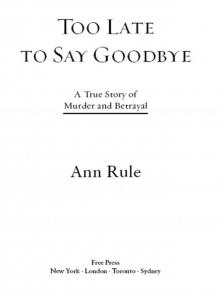 Too Late to Say Goodbye: A True Story of Murder and Betrayal
Too Late to Say Goodbye: A True Story of Murder and Betrayal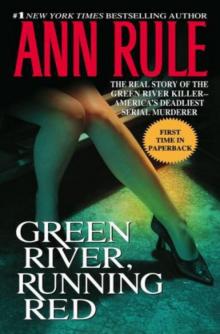 Green River, Running Red
Green River, Running Red Bitter Harvest
Bitter Harvest Dead by Sunset: Perfect Husband, Perfect Killer?
Dead by Sunset: Perfect Husband, Perfect Killer? Lust Killer
Lust Killer And Never Let Her Go: Thomas Capano: The Deadly Seducer
And Never Let Her Go: Thomas Capano: The Deadly Seducer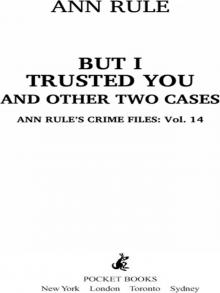 But I Trusted You and Other True Cases
But I Trusted You and Other True Cases Smoke, Mirrors, and Murder and Other True Cases
Smoke, Mirrors, and Murder and Other True Cases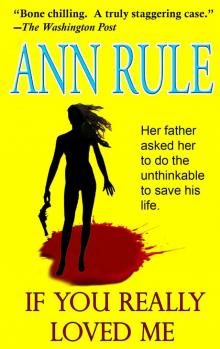 If You Really Loved Me
If You Really Loved Me Kiss Me, Kill Me and Other True Cases
Kiss Me, Kill Me and Other True Cases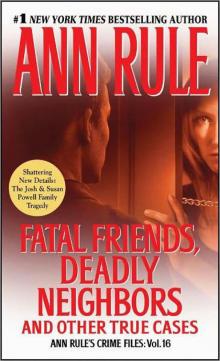 Fatal Friends, Deadly Neighbors and Other True Cases
Fatal Friends, Deadly Neighbors and Other True Cases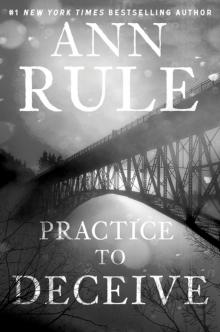 Practice to Deceive
Practice to Deceive Mortal Danger and Other True Cases
Mortal Danger and Other True Cases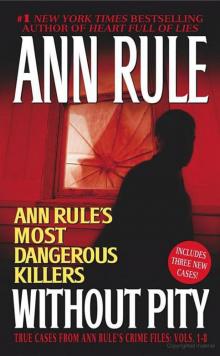 Without Pity: Ann Rule's Most Dangerous Killers
Without Pity: Ann Rule's Most Dangerous Killers Everything She Ever Wanted
Everything She Ever Wanted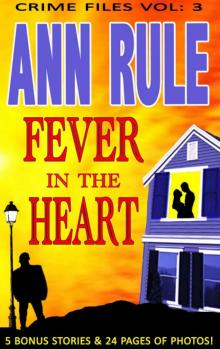 A Fever in the Heart and Other True Cases
A Fever in the Heart and Other True Cases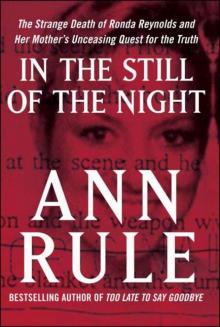 In the Still of the Night
In the Still of the Night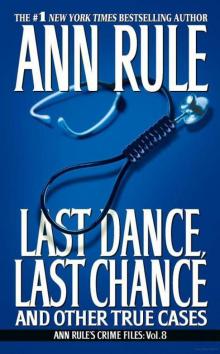 LAST DANCE, LAST CHANCE - and Other True Cases
LAST DANCE, LAST CHANCE - and Other True Cases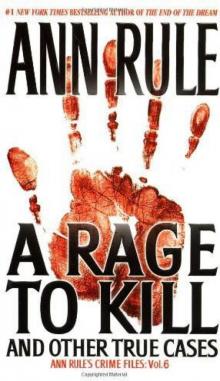 A Rage to Kill
A Rage to Kill The I-5 Killer
The I-5 Killer The Stranger Beside Me
The Stranger Beside Me Everything She Ever Wanted: A True Story of Obsessive Love, Murder, and Betrayal
Everything She Ever Wanted: A True Story of Obsessive Love, Murder, and Betrayal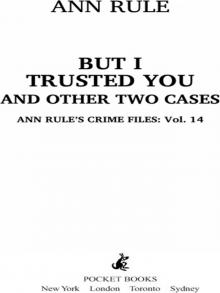 But I Trusted You
But I Trusted You Without Pity
Without Pity Kiss Me, Kill Me
Kiss Me, Kill Me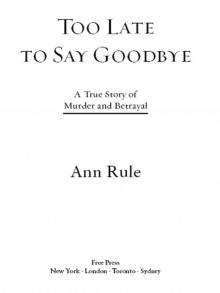 Too Late to Say Goodbye
Too Late to Say Goodbye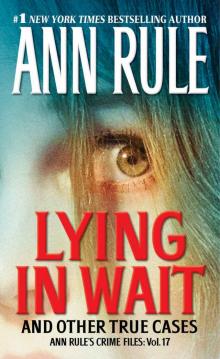 Lying in Wait
Lying in Wait Fatal Friends, Deadly Neighbors
Fatal Friends, Deadly Neighbors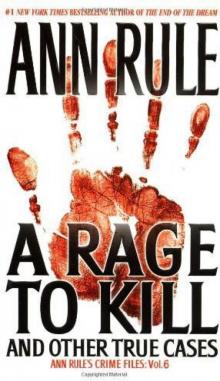 A Rage to Kill: And Other True Cases
A Rage to Kill: And Other True Cases And Never Let Her Go
And Never Let Her Go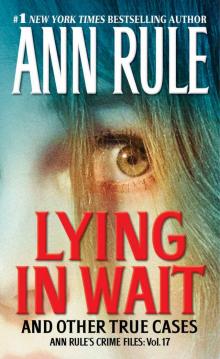 Lying in Wait Ann Rule's Crime Files Vol.17
Lying in Wait Ann Rule's Crime Files Vol.17 Blood Secrets: Chronicles of a Crime Scene Reconstructionist
Blood Secrets: Chronicles of a Crime Scene Reconstructionist No Regrets
No Regrets Mortal Danger
Mortal Danger But I Trusted You: Ann Rule's Crime Files #14
But I Trusted You: Ann Rule's Crime Files #14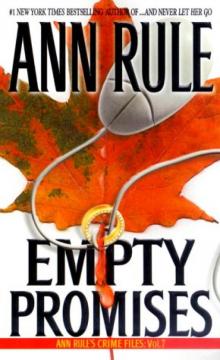 Empty Promises
Empty Promises Dead by Sunset
Dead by Sunset Last Dance, Last Chance
Last Dance, Last Chance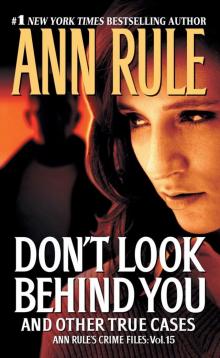 Don't Look Behind You
Don't Look Behind You